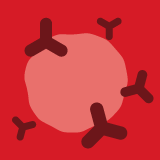Topic Menu
► Topic MenuTopic Editors

Anti-Tumor Immune Responses 2.0
Topic Information
Dear Colleagues,
It remains unclear how and when, during multi-step tumor progression via clonal selection, cancer cells are selected for their high mutational burden, as well as how the immune system is first alerted to their presence and begins its initial, often unsuccessful, attempts at eliminating them. At present, it is impossible to say which of the dozens of immunotherapy strategies under development will become the precursors of anti-cancer treatments that will prove to be vastly more effective than those developed to date and that will generate robust, durable responses for the majority of patients receiving treatment. For example, advances in molecular genetics, biochemistry, virus biology, cellular and system biology, and cellular immunology have recently converged with discoveries in drugs and antibodies to generate novel, potentially powerful ways to harness the immune response to eradicate human tumors. At this time, the action of the immune system has improved two types of attacks against infectious agents or cells targeted for destruction or neutralization. These involve humoral and cellular immunity, as some types of cells, particularly macrophages and NK cells, have an innate ability to recognize cells that should be destroyed. In this issue, we would like to discuss the frontiers in this area of research concerning cancer cell types where these phenomena have been proven to be positively active at the level of hematopoietic malignancies and, most importantly, in solid tumors with advanced immune therapies. Examples of instances where these strategies fail are of great value for better understanding how cancer cells evade this immune mechanism using the most recent genome biology technologies to determine which other genes/proteins/pathways are involved in these coordinated, interconnecting actions.
Prof. Dr. Massimo Zollo
Dr. Renata Grifantini
Topic Editors
Keywords
- genetics
- biochemistry
- virology
- system biology
- immune evasion
- immune cells
- immune drugs
- immune antibodies
- signaling pathways
- immune therapies
- antitumor vaccines
Participating Journals
| Journal Name | Impact Factor | CiteScore | Launched Year | First Decision (median) | APC |
|---|---|---|---|---|---|

Antibodies
|
3.0 | 7.1 | 2012 | 23 Days | CHF 1800 |

Cancers
|
4.5 | 8.0 | 2009 | 16.3 Days | CHF 2900 |

Immuno
|
2.1 | 2.6 | 2021 | 28.1 Days | CHF 1000 |

International Journal of Molecular Sciences
|
4.9 | 8.1 | 2000 | 18.1 Days | CHF 2900 |

Vaccines
|
5.2 | 8.9 | 2013 | 17.6 Days | CHF 2700 |

MDPI Topics is cooperating with Preprints.org and has built a direct connection between MDPI journals and Preprints.org. Authors are encouraged to enjoy the benefits by posting a preprint at Preprints.org prior to publication:
- Immediately share your ideas ahead of publication and establish your research priority;
- Protect your idea from being stolen with this time-stamped preprint article;
- Enhance the exposure and impact of your research;
- Receive feedback from your peers in advance;
- Have it indexed in Web of Science (Preprint Citation Index), Google Scholar, Crossref, SHARE, PrePubMed, Scilit and Europe PMC.
Related Topic
- Anti-Tumor Immune Responses (20 articles)


